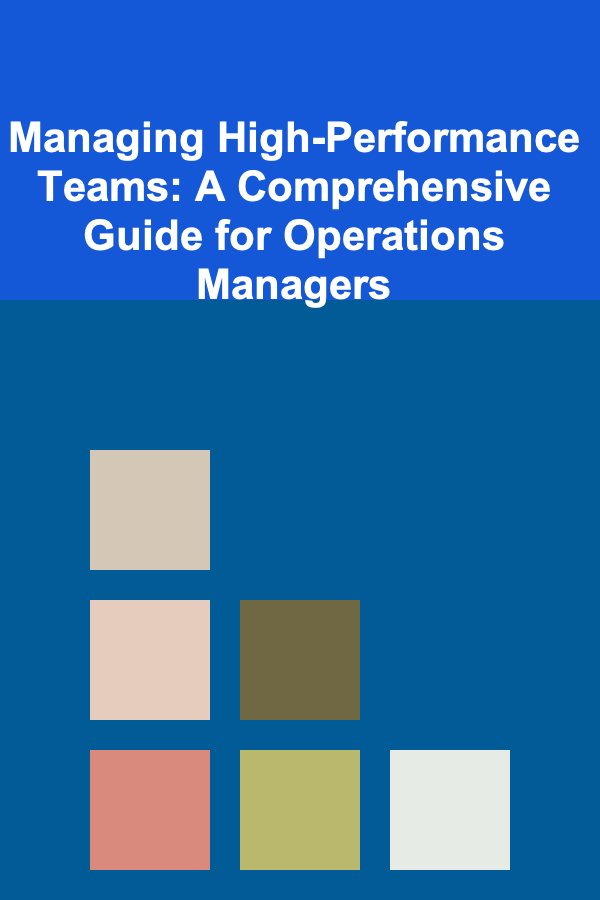
How To Master Quantum Computing Fundamentals
ebook include PDF & Audio bundle (Micro Guide)
$12.99$10.99
Limited Time Offer! Order within the next:

Quantum computing has evolved from a theoretical concept to a rapidly advancing field that is poised to revolutionize industries ranging from cryptography and artificial intelligence to materials science and pharmaceuticals. As the promise of quantum computers grows, so too does the demand for understanding and mastering quantum computing fundamentals. In this article, we will delve deeply into the essentials of quantum computing, explore its principles, and provide a guide on how you can begin your journey to mastering this cutting-edge technology.
What is Quantum Computing?
At its core, quantum computing is a new paradigm in computation. Traditional computers, also known as classical computers, process information using binary bits, which represent either a 0 or a 1. These bits are the fundamental units of classical computation, and they follow well-established rules of logic and arithmetic.
Quantum computers, however, leverage quantum bits, or qubits, to represent information. Unlike classical bits, qubits can exist in multiple states simultaneously thanks to a phenomenon known as superposition. This ability allows quantum computers to perform certain types of calculations exponentially faster than classical computers. Additionally, qubits can be entangled, meaning the state of one qubit can be directly tied to the state of another, regardless of the distance between them. This phenomenon, known as quantum entanglement, enables quantum computers to solve complex problems that would be impossible or infeasible for classical computers.
While quantum computing is still in its nascent stages, researchers are making significant strides in developing algorithms and hardware that can take advantage of these quantum phenomena.
The Building Blocks of Quantum Computing
To master quantum computing, you need to understand a few key concepts that form the foundation of this technology. These concepts are both mathematically and physically grounded in the laws of quantum mechanics, a branch of physics that governs the behavior of particles at the smallest scales.
1. Qubits
The most fundamental concept in quantum computing is the qubit. A qubit is the quantum version of a classical bit, and it can exist not only in the states of 0 and 1, but also in any quantum superposition of these states. This is a key difference from classical bits, which are restricted to being either 0 or 1 at any given time.
Mathematically, a qubit can be represented as a linear combination of the two possible states, 0 and 1:
∣ψ⟩=α∣0⟩+β∣1⟩where α and β are complex numbers, and ∣α∣2+∣β∣2=1, ensuring that the qubit remains normalized.
The coefficients α and β represent the probability amplitudes for the qubit being measured in the state 0 or 1. When you measure a qubit, it will collapse to one of these two states with the probabilities ∣α∣2 and ∣β∣2, respectively.
2. Superposition
Superposition is the ability of a qubit to exist in multiple states simultaneously. For example, a qubit can be in a superposition of both 0 and 1, where it is neither just 0 nor just 1, but rather a combination of the two.
This concept is illustrated by Schrödinger's famous thought experiment with a cat that is simultaneously alive and dead inside a box, a metaphor for the superposition of states at the quantum level.
In quantum computing, superposition allows quantum algorithms to explore many possible solutions at once, vastly improving computational power for certain types of problems.
3. Entanglement
Quantum entanglement is another critical concept in quantum computing. It describes a phenomenon where qubits become intertwined in such a way that the state of one qubit cannot be described independently of the state of the other, even if the qubits are separated by vast distances. This non-local property allows quantum computers to process information in parallel, greatly enhancing computational efficiency.
When two qubits are entangled, their states are correlated. Measuring one qubit immediately determines the state of the other, no matter how far apart they are. This correlation persists even if the qubits are far apart in space.
Entanglement is a resource for quantum algorithms, and it forms the basis for many quantum communication protocols, such as quantum teleportation and quantum key distribution.
4. Quantum Gates
Quantum gates are the building blocks of quantum circuits, much like classical logic gates (AND, OR, NOT) are for classical circuits. Quantum gates manipulate qubits through unitary operations, which preserve the total probability. These operations are reversible, unlike their classical counterparts.
The most basic quantum gate is the Pauli-X gate, which is the quantum equivalent of the classical NOT gate. The Pauli-X gate flips the state of a qubit from 0 to 1 or from 1 to 0. There are also other quantum gates like the Hadamard gate (H), which creates superpositions, and the controlled-NOT gate (CNOT), which is used for entangling qubits.
Quantum gates are combined to form quantum circuits, which perform the computations. The ability to manipulate qubits with quantum gates is what enables quantum algorithms to solve complex problems.
5. Quantum Interference
Interference is another quantum phenomenon that quantum computers take advantage of. When a quantum algorithm is run, the quantum state of a system can interfere with itself. Depending on how the superposition of states is constructed, this interference can amplify the probability of a correct solution or cancel out the probability of incorrect ones.
Interference is crucial for optimizing quantum algorithms and ensuring that the quantum system collapses to the correct solution when measured.
6. Measurement
Measurement in quantum computing is different from classical measurement. When you measure a qubit, its superposition collapses, and you observe it in one of the two states (0 or 1). However, the outcome of a measurement is probabilistic, meaning that you cannot predict the outcome with certainty in advance.
For example, if a qubit is in an equal superposition of states 0 and 1, a measurement will collapse the qubit to 0 with a 50% probability, and to 1 with a 50% probability. The challenge in quantum computing is to devise algorithms that use interference and entanglement to bias the probabilities towards the correct answer.
The Quantum Computing Workflow
Quantum computing algorithms are typically designed to solve problems by exploiting quantum phenomena like superposition, entanglement, and interference. The quantum computing process can be broken down into a series of steps:
1. Problem Formulation
The first step is formulating the problem in a way that can be solved using quantum computing. This often involves rethinking classical approaches to problems and mapping them onto quantum algorithms.
2. Quantum Algorithm Design
Once the problem is formulated, the next step is designing a quantum algorithm. This involves selecting the appropriate quantum gates, quantum circuits, and measurements to efficiently solve the problem.
For example, one of the most famous quantum algorithms is Shor's algorithm, which can factor large numbers exponentially faster than the best-known classical algorithms. Another widely known algorithm is Grover's algorithm, which provides a quadratic speedup for unstructured search problems.
3. Quantum Circuit Simulation
Before running a quantum algorithm on a real quantum computer, it is often necessary to simulate the algorithm on a classical computer to check for correctness. Quantum circuit simulators allow researchers and engineers to test quantum algorithms and make improvements.
4. Execution on Quantum Hardware
Once the quantum algorithm has been designed and tested, it is executed on a real quantum computer. This is where the physical hardware comes into play. Current quantum computers are still in the early stages of development, but several companies like IBM, Google, and Rigetti are building quantum processors that are capable of solving specific problems that classical computers cannot.
Execution on quantum hardware typically requires the quantum algorithm to be compiled into a sequence of quantum gates, and the results are measured at the end of the computation.
5. Post-Processing and Interpretation
After the quantum computer performs its computation, the results are measured, and post-processing is required to interpret the outcomes. The measurements yield probabilistic results, so the algorithm is often run multiple times to get an accurate estimate of the solution.
Quantum Computing Algorithms
There are several notable quantum computing algorithms that are important to understand as you begin mastering quantum computing. Here are a few of the most important:
1. Shor's Algorithm
Shor's algorithm is one of the most well-known quantum algorithms. It can factor large numbers exponentially faster than any known classical algorithm. This has profound implications for cryptography, as many encryption schemes rely on the difficulty of factoring large numbers.
2. Grover's Algorithm
Grover's algorithm is a quantum search algorithm that provides a quadratic speedup over classical search algorithms. It is used to search through unsorted databases and can be applied to a variety of optimization problems.
3. Quantum Fourier Transform (QFT)
The Quantum Fourier Transform is a key component of many quantum algorithms, including Shor's algorithm. It provides a quantum version of the classical Fourier transform, which is used to analyze the frequencies of signals.
4. Quantum Simulation
Quantum simulation algorithms are used to simulate the behavior of quantum systems. These algorithms can be used in fields like materials science and chemistry to simulate molecular interactions and predict chemical reactions.
How to Learn Quantum Computing
Mastering quantum computing requires a structured approach, as it involves understanding both the theoretical and practical aspects of the field. Here's a step-by-step guide to learning quantum computing:
1. Understand the Basics of Quantum Mechanics
Before diving into quantum computing, it is essential to have a solid understanding of the principles of quantum mechanics. Key concepts include wave-particle duality, superposition, entanglement, and quantum measurement. You don't need to be an expert in quantum physics, but a basic understanding will help you grasp the principles behind quantum computing.
2. Learn Quantum Computing Mathematics
Quantum computing is deeply rooted in linear algebra and probability theory. You should be familiar with concepts such as vectors, matrices, eigenvalues, and complex numbers. A solid understanding of these mathematical concepts will allow you to follow quantum algorithms and understand the underlying quantum mechanics.
3. Get Hands-On with Quantum Programming
Many quantum programming languages, such as Qiskit (IBM), Cirq (Google), and Quipper, are available for beginners. These languages provide frameworks for building quantum circuits and running algorithms on quantum simulators or real quantum hardware. Start by experimenting with simple quantum algorithms, like the Deutsch-Jozsa algorithm or Grover's algorithm.
4. Experiment with Quantum Hardware
Several quantum cloud platforms allow you to run quantum programs on real quantum computers. IBM's Quantum Experience, for example, allows users to access a quantum processor and run experiments. By experimenting with real quantum hardware, you can gain practical experience and gain a deeper understanding of how quantum computers operate.
5. Stay Updated
Quantum computing is a rapidly evolving field. Stay updated on the latest research, news, and advancements by following academic journals, attending conferences, and participating in online communities. Many universities and research institutes also offer online courses and certifications in quantum computing.
Conclusion
Quantum computing is a highly complex and rapidly developing field that promises to revolutionize industries and solve problems that classical computers cannot. To master quantum computing fundamentals, you need to understand the core concepts of quantum mechanics, get comfortable with quantum computing mathematics, and experiment with quantum programming. With dedication and continuous learning, you can become proficient in this exciting and transformative technology.
Reading More From Our Other Websites
- [Organization Tip 101] How to Use Barcodes in Home Inventory Management
- [Organization Tip 101] How to Develop a System for Tracking Progress on Your Goals
- [Personal Finance Management 101] How to Find and Avoid Financial Scams
- [Personal Care Tips 101] How to Keep Your Mascara Application Clean and Neat
- [Home Maintenance 101] How to Maintain Your Home's Solar Panels for Maximum Efficiency
- [Organization Tip 101] How to Organize Guest Lists for Easy Tracking
- [Personal Investment 101] How to Improve Your Credit Score for Better Investment Opportunities
- [Trail Running Tip 101] Best Trail Running Shoes for Technical Terrain: A Deep Dive into Grip, Stability, and Protection
- [Home Budget 101] How to Budget for Childcare and School Expenses
- [Home Maintenance 101] How to Maintain Your Home's Doors and Windows for Security

How to Create a Checklist for Testing Site Performance Post-Migration
Read More
How to Increase Your Home's Value with a Renovation
Read More
Managing High-Performance Teams: A Comprehensive Guide for Operations Managers
Read More
How To Color Grade Video Like a Professional
Read More
How to Conduct a Comprehensive Supply Chain Network Optimization Study
Read More
How to Make Soap and Lotion for Sensitive Skin: Gentle Recipes & Ingredients
Read MoreOther Products

How to Create a Checklist for Testing Site Performance Post-Migration
Read More
How to Increase Your Home's Value with a Renovation
Read More
Managing High-Performance Teams: A Comprehensive Guide for Operations Managers
Read More
How To Color Grade Video Like a Professional
Read More
How to Conduct a Comprehensive Supply Chain Network Optimization Study
Read More